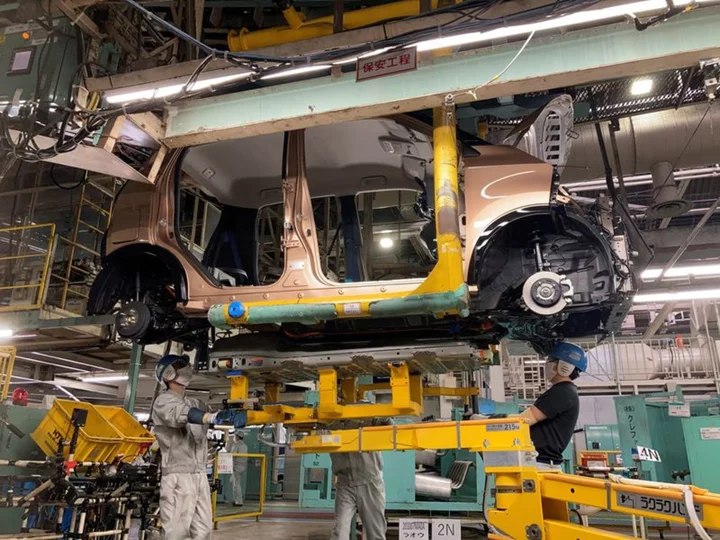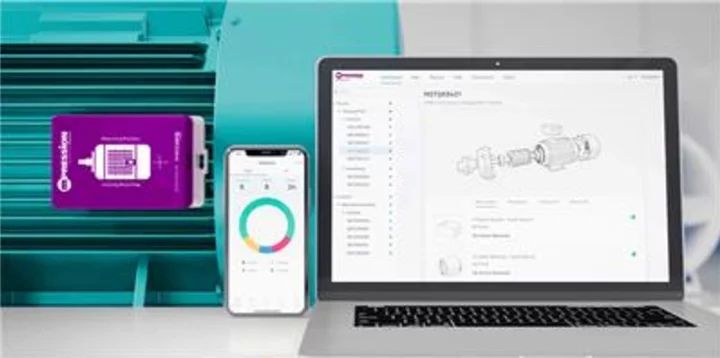To hear Republican presidential candidates describe the US economy, you'd think it was in a deep recession, with growth and productivity choked off by President Joe Biden's policies.
The reality is decidedly less bleak — and far more nuanced.
In fact, the US economy is growing — fast.
For most workers, the past two years have been especially favorable, with roughly two positions available for every job seeker. Inflation, while still painfully high, is cooling. Real wages, adjusted for inflation, are finally on the rise.
As much as Biden can't claim credit for all that good economic news, Republicans can't, in good faith, blame Biden for all of the bad news, either.
GOP candidates who slammed Biden's economic agenda in Wednesday's primary debate are seizing on a real issue of voter frustration, but that reality is based more on vibes than facts.
The economy is strong, but most Americans say they don't feel good about it, according to polls. A CNN poll published earlier this month showed a majority of Americans feel the economy is getting worse.
And a key gauge of consumer sentiment showed that optimism fell earlier this month after being on an upswing throughout the summer.
That disconnect is largely because of inflation and the Federal Reserve's campaign to fight it — a one-two punch that has made everything from groceries to housing less affordable.
Here's what's really going on.
Inflation
Fox News opened the GOP debate Wednesday night with a video of Wisconsin voters describing their frustrations over high prices — by far the biggest economic pain point for the Biden administration.
Even though inflation has come down significantly, from 9.1% last summer to 3.2% now, prices overall are about 18% higher today than they were in late 2019, just before the pandemic, according to the Bureau of Labor Statistics.
There's no denying those price increases have hurt real people. Gas prices, which are notoriously volatile and impossible for any president to control, have been climbing higher in recent weeks, adding to the financial sting for drivers.
But it's important to note the complex global forces — it's hardly just an American problem — that drove inflation higher in the first place.
In short:
The pandemic scrambled global supply chains and drastically altered consumer behavior, leaving the world with too much demand and too little supply. The Federal Reserve, led by Trump appointee Jerome Powell, essentially turned on a money spigot to keep financial markets from collapsing in the early days of the pandemic, then kept the spigot on (arguably for too long, though that debate is one for economic historians).Stimulus payments passed by both the Trump and Biden administrations fed demand for goods, though they also kept millions of Americans from going hungry and fueled a powerful economic rebound.Corporations kept prices inflated even after supply chains began to unwind from the pandemic-induced kinks. Russia's invasion of Ukraine in early 2022 created new shocks to global supply chains, driving prices for energy and food higher.
Bottom line: Neither Biden nor Trump had any control over the catastrophic impact of the pandemic. And the legislation behind "Bidenomics" didn't pass the Senate until late 2021, long after inflationary forces had taken root, and well before any federal spending could have any real impact on the economy.
It's also worth noting that as painful as inflation feels in America, other parts of the world have it worse. British inflation remains at 6.8%, Germany's is 6.2% and Egypt's is north of 36%.
Housing
Another reason voters are down on the economy: Housing affordability is at its lowest point in decades.
Let's say you bought a median-priced home with a 20% down payment in January 2022. Your mortgage rate would likely have been a little over 3%, making your monthly payment on that house about $1,300.
That same home at today's rate would cost more than $2,300 per month.
The reasons for the housing crunch are similarly multifaceted and out of any one person's control.
In short: Mortgage rates in the United States are now at 7.23% — their highest level since 2001 — in part because of the Fed's historic interest-rate increases aimed at cooling inflation. That, combined with historically low housing supply (a lingering hangover from the 2008 subprime mortgage crisis, plus a pandemic-era buying spree), has pushed up the median home price to $416,100, from $258,000 in 2019.
Bright spots
While Republicans deride "Bidenomics," the Biden administration is touting the economic recovery, especially in the labor market.
In January 2021, when Biden took office, unemployment was around 6.3%. It has steadily declined to the lowest level in a half-century, hovering at around 3.5% for more than a year.
And despite earlier forecasts from economists, expectations for a 2023 recession are crumbling.
In fact, economic growth is booming thanks to the strong labor market and resilient consumer spending.
We won't have a complete read on third-quarter economic growth until late October, but already, forecasts for GDP "are running wild on the upside," writes Chris Rupkey, chief economist at FwdBonds. "It is looking like a blowout quarter for economic growth."
The unofficial GDPNow forecast from the Atlanta Federal Reserve expects economic growth in the third quarter to rise 5.8% on an annualized basis — double the rate of GDP growth from the same period last year and on pace for the biggest quarterly increase since the end of the post-pandemic boom in the last quarter of 2021.









